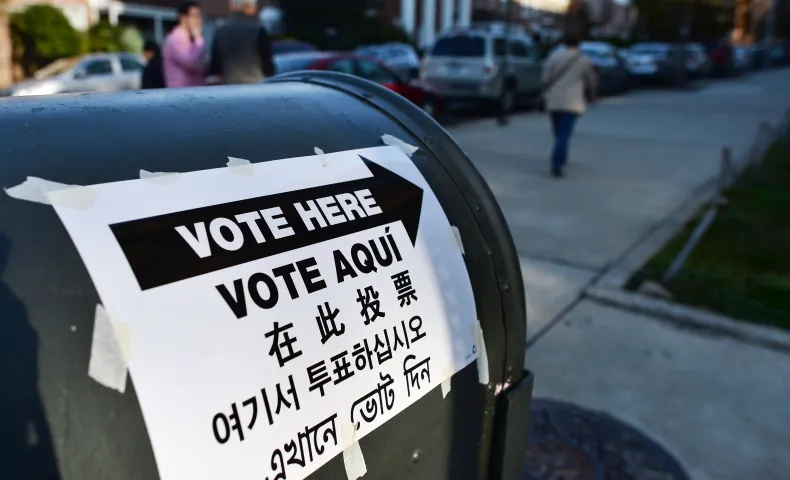 Photo by JEWEL SAMAD/AFP/Getty Images
Photo by JEWEL SAMAD/AFP/Getty Images
Lessons from Orange County
There is a powerful and promising trend under way in cities and counties throughout California. People and organizations are coming together across traditional dividing lines to build power in communities that don’t have an equal voice in government and civic life. Orange County—with an increasingly diverse population of 3 million people—has been an epicenter of this collaborative work.
Marc Victoria is executive director of the Orange County Civic Engagement Table (OCCET). In this conversation, he talks about how this unique cross-issue collaborative is supporting diverse groups in the county to work together to increase civic participation in low-income Latinx, Korean, Vietnamese, and Chinese communities.
Why should people care about increasing civic participation?
Civic participation is about trying to make sure that everyone has a voice. Here in Orange County, we are working together to build a strategy so low-income people and people of color are actively engaged in their communities, and so more of them are voting.
These communities are a large percentage of the local population, and yet we don’t see their voices represented. The result is that government fails to respond to their needs and interests—and we as a society aren’t doing everything we can to really make a difference in lifting these communities out of poverty and helping everyone succeed.
What are some common misconceptions about how this work is usually done?
First off, civic participation is an issue people usually think about only at election time. But reaching out and engaging and organizing communities to exercise their democratic rights should be a year-round priority. That means investing in the groups that do this work on an ongoing basis, and it means supporting partnerships like ours where people can collaborate on issues and campaigns year in and year out.
Second, when it is election time, most get-out-the-vote drives are aimed at likely voters—people with a strong record of showing up at the polls. Everyone is so focused on these folks that other populations get lost in the shuffle. But we’re focused on groups where you can make a big difference when it comes to increasing participation—groups who have a lot at stake but who don’t regularly show up at the polls.
For a lot of these people, politics and elections just aren’t a top-of-mind concern. They need to get food on the table, they need to manage two or three jobs, and they need to make sure their kids have a safe place to go after school. Our job is to help these communities see how different issues affect their lives, and to support them to get more involved and have a voice.
Why is it important for groups to come together to do this work? And what does that collaborative process look like?
Here in Orange County, our table started with five groups and now we are up to eight.[1] These are groups focused on environmental justice, faith communities, and the rapidly growing Latinx and Asian and Pacific Islander populations in the county. They are coming together because they see how many issues and problems cut across the communities they care about.
These groups realize they are stronger working together and coordinating what they do instead of everyone duplicating everyone else’s work. OCCET is the space where they can sit down together, hash out what’s important to their communities, and then divvy up the responsibilities for getting things done. The partnership also provides groups with training and support for things like communications and data analysis and outreach so they can be as effective as possible.
Orange County got a lot of attention in the 2018 election because of record voter turnout. What happened? And how much of that is because of the work of these groups?
2018 was a great year. We saw a huge wave of voter turnout. In some of the congressional districts in the county, turnout jumped more than 60 percent compared to previous midterm elections. My favorite statistic from our work last year is that four out of five of the people we contacted said this was the first time anyone actively reached out to them about voting. That shows we’re really tapping into a population that’s overlooked and ignored.
What’s happening now with this work?
Our groups are looking ahead to getting out the vote in the 2020 elections. They’re also talking about how to ensure the broadest possible participation in the 2020 census. We want to make sure the communities we’re focused on can keep growing their power and their voice. We’ve also started in-depth conversations about issues in the community where the groups can find common ground and work together. One of those issues is equal representation in city governments. These groups are leading the drive to eliminate expensive at-large elections in favor of district elections that give all neighborhoods more of a voice in selecting city councils.
Another issue that’s rising to the top is housing affordability. It’s the perfect example of an issue that affects everyone, and one where we desperately need to hear from people and communities who are usually left out of the conversation.
We can learn a lot from those unheard voices—we just need to give them a chance to be heard.
[1] Korean Resource Center (KRC); Orange County Asian and Pacific Islander Community Alliance (OCAPICA); Orange County Communities Organized for Responsible Development (OCCORD); Orange County Congregation Community Organization (OCCCO); Orange County Labor Federation (OCLF); Resilience OC; VietRISE; Orange County Environmental Justice (OCEJ).